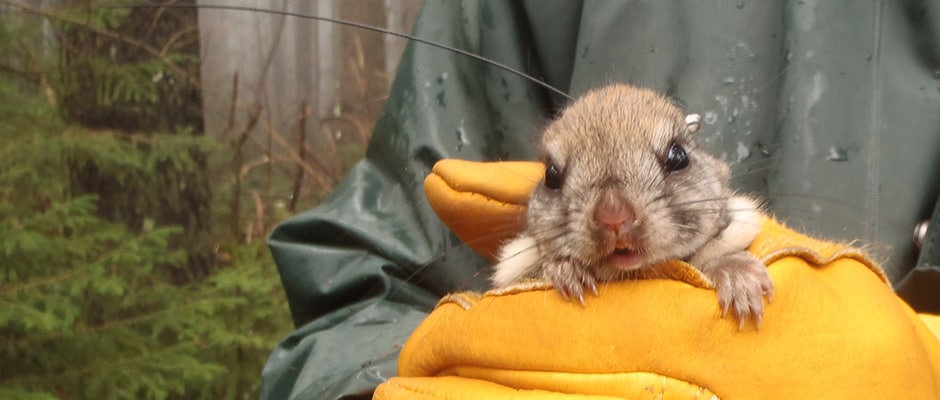Share this article
Researchers Map Flying Squirrel Habitat
Carolina northern flying squirrels (Glaucomys sabrinus coloratus) may be flying high, but their population numbers could definitely use a lift.
In a new study published in Endangered Species Research, researchers in Virginia created a predictive map of the Carolina northern flying squirrel habitat in the southern Appalachians. The species — listed as federally endangered since 1985 and found in high elevation spruce forests — faces habitat loss and subsequent population fragmentation.
There are two subspecies of northern flying squirrels that occur from New England to Alaska including the Carolina northern flying squirrel and the Virginia northern flying squirrels (Glaucomys sabrinus fuscus), according to Mark Ford, Unit leader of USGS Virginia Cooperative Fish and Wildlife Unit and lead author of the study. Ford studied the Virginia species in West Virginia in the past, but this is his first study on Carolina northern flying squirrels.
As part of the study, Ford and his team analyzed 20 years of data from nest boxes — cypress boxes that are about 33 centimeters long and 12.5 centimeters tall with about a five-centimeter opening, used to trap squirrels — in conjunction with GIS data and data on habitat layers to determine where the Carolina northern flying squirrel can be found. They also examined the nest boxes to determine which areas had the greatest occupancy and, based on that information, identified areas with similar habitat conditions. “It wasn’t rocket science, but it required a lot of skill and capabilities that my team had,” Ford said.
That’s because Carolina northern flying squirrels are typically difficult to trap. “We use gigantic boxes that transect given areas and check them once a year. But still, detection probability is very low,” Ford said. Researchers also found it time consuming to lug the boxes up undeveloped sides of mountains.
Still, by studying a globally rare species that lives in an equally rare ecosystem in rugged places, Ford hopes the model his team created will provide managers the ability to know where the squirrel might potentially be.
He also suggested measures that might help conserve this endangered species such as protecting the squirrel’s main food source — red spruce. Due to logging and burning of forests, there is very little red spruce left, according to Ford. Further, a conflict between maintaining high elevation red oak communities with fire, hinders the red spruce condition. “If there’s fire, there’s no spruce.”
And like many other species, the Carolina northern flying squirrel faces the threat of climate change. The species occurs in a globally rare ecosystem and the squirrels are drawn further and further up the mountain. “This is compelling because the species ties into both restoration and climate change as a threat,” he said. “We need to find the best way to restore the system and make it resilient so it can persist through climate change.”
According to Ford, the species serves as a good example of the health and functionality of the ecosystem. And if that’s not a good reason to want to species to stick around, Ford said the Carolina northern flying squirrels are hard not to love, even if he was bitten a few times.
“They’re charismatic little guys,” Ford said. “They have a cute wow factor of 11 on a scale of one to 10.”
Header Image:
A researcher holds a radio-collared female Carolina northern flying squirrel on Whitetop Mountain, Va. Researchers mapped the endangered species habitat in a recent study.
Image Credit: Corinne Diggins via USGS








